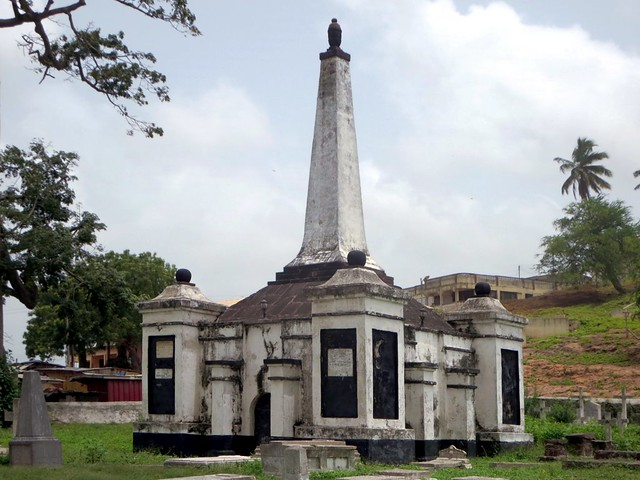It is not so surprising that after many years of colonisation, there are still monumental erects of its presence in Africa, specifically Ghana. The Dutch Cemetery of Elmina is one of the historical centres in Ghana, it was constructed on the order of Governor of the Dutch Gold Coast Johannes Petrus Hoogenboom in 1806.
Up until that date the Dutch had buried their dead inside or just outside the Elmina Castle, but by the beginning of the 19th century little space was left there, so it was decided to construct a new cemetery which was known as “the Garden” of Elmina.
Ironically, Governor Hoogenboom was also one of the first people to be interred in the cemetery, after he was murdered by the locals of Elmina, with whom he had a misunderstanding. In the middle of the cemetery, a large tomb is situated in which the most prominent people were buried, including Governor Hoogenboom.
Other prominent people interred are Governor Anthony van der Eb, Acting Commander Eduard Daniel Leopold van Ingen, Carel Hendrik Bartels, R. P. Baffour, Chief Kweku Andoh, and Elmina King Nana Kobina Gyan.
The cemetery which was renovated in 2006, as part of the Elmina 2015 Strategy had its reconstruction, funded by the Dutch embassy. Among other things, the gate was restored, and the inscription reading “O weldadige moeder, ontvang uwe kinderen weder” (English translation: Oh benevolent mother, receive your children once again) was put into place again.
A plaque unveiled on 24 July 2006 by the Dutch ambassador to Ghana stands as a remarkable remembrance of this renovation.


